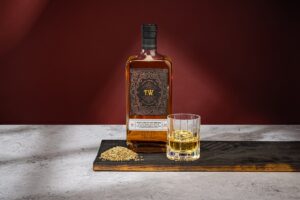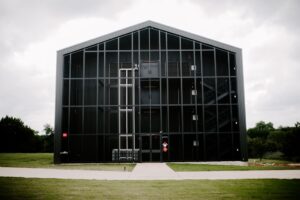By Richard Thomas
As the craft whiskey explosion brought whiskey-making to places across the American where it had never been known before, I debated in print who would become America’s third whiskey state. For the second edition of my book, American Whiskey, I finally settled on Texas, and the Lone Star State has gone on to confirm that opinion in the year that followed.
Austin, these days known more for being the Live Music Capital of the World than as the capital of its host state, has been a particular hotbed for small distiller whiskey in Texas. I recently got to explore some of the issues related to working in that electric environment with Tri Vo, co-founder of one of the newcomers to Texas whiskey.
RT: This is all new ground for me, and I imagine most readers, so please: introduce yourself by telling us about how you got into whiskey in the first place. What was your introduction and what spurred your interest?
TV: I started drinking whiskey as I’m sure many do: Jack & Cokes on 6th Street [in Austin]. It wasn’t until Tim, my lifelong friend and now business partner, planned a trip to Kentucky that I had my “aha” moment. Not only did I have the first taste of whiskey there that blew my mind, but I also saw an opportunity. In an industry so rooted in tradition, we saw a chance to bring a unique perspective. We saw a chance to do what we do best: nerd out and cultivate an uncommon approach to something steeped in years of heritage.
We don’t have some ancient mash bill recipe we inherited from our great grandfather, but we do have a propensity for research and approach is incredibly data-driven and the distillery sometimes feels like more of a lab. We loved the idea of using these traditional methods–like our Kentucky-style rickhouse and Vendome pot-still–but bringing this really analytical eye to it to push for the best possible product.
RT: You started distilling at Fierce Whiskers in 2020, so when you first entered the Austin whiskey scene, it was already well-developed. What were the challenges and the positives of starting up a new craft distillery in such a vibrant, established whiskey town?
TV: While we started distilling in 2020, this project started eight years ago. Our distillery’s first iteration was on an Excel spreadsheet. The concept of Texas whiskey was only beginning to take shape then and we had no idea it would be where it is today.
Overwhelmingly, it’s incredibly positive having our friends around us pushing Texas whiskey forward. We are grateful for all of their efforts in building the stage, but there are certainly challenges in overcoming negative stereotypes that still surround Texas whiskey; people often assume it will be “hot” or overly oak-y due to such a warm climate. We certainly aim to do our part in changing those views. Already, we see shocked responses to how nuanced the notes of our first rye release are. Ultimately, it doesn’t hurt to know where the bar is if you aim to raise it.
RT: I’ve read you make the tightest still cuts in Texas whiskey-making. Just how tight is that?
TV: The best way to know is to experience the whiskey. We are incredibly proud of how far our whiskey has come since we started. We hypothesized that an uncompromising drive for quality would result in a whiskey Texas could be proud of. Only using the best part of the distillate is just one way. We know it’s all talk until it shows up in the bottle.
RT: Sustainability means different things to different people, so what exactly are the sustainable measures implemented at your distillery?
TV: When we started this project, we knew keeping an eye on our impacts was one of the ways we wanted to bring our unique lens to making whiskey. First and foremost sustainability means efficiency to us, so being intentional with the design of our distillery and selecting energy efficient equipment was crucial. To take it further, we measure and report our emissions to really understand our impacts and try our best to offset them additions like a solar array on the roof that covers approximately ⅓ of our energy usage. Our team also leads efforts for local farmers to pick up our spent grain–our main wastestream!–as well as recycling the bottles used in our tasting room even when it’s cheaper to buy new bottles. In our view, making great whiskey should make the world a better place.
RT: The tasting room looks like a good place to hang out. How busy is it on weekends?
TV: Our distillery sits on a very special six acres overlooking a greenbelt. On a given weekend you’ll see people lounging outside on the lawn with picnic blankets, sipping drinks on our covered porch, or gathering in our airy tasting room with large groups of friends. Though we tend to get pretty packed on Fridays and Saturdays especially, we are lucky to have so many beautiful corners for people to spread out that it always feels like there is plenty of room to have a few drinks and watch the sunset.
RT: You already have a five story rickhouse; what is the storage capacity?
TV: Our rickhouse holds about 5,600 barrels.
RT: I also saw your webpage refer to President Hayes referring to Austin as an “inconsiderable village” a couple of times. Is that quip of his more amusing or annoying?
TV: We’re sure it wasn’t intended to be flattering, but we love it. Not everyone will understand what we are doing here in Austin, but if you know, you know.
 The Whiskey Reviewer A World of Whiskey, Poured Every Weekday
The Whiskey Reviewer A World of Whiskey, Poured Every Weekday




